G. L. Pease
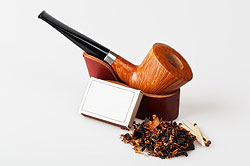 As I put the finishing touches on this installment of Ask G.L. Pease, I’m also finishing up the last bowl of an old fave, a no longer produced blend, from a tin dating to 2004. In the past month, I’ve burned through this one, and two similar tins from early and late 2001. It’s been an interesting experience for me. I’m intimately familiar with the tobacco, as it’s one of my own. I knew it in its infancy, I know it in its relative maturity (anything over five years can certainly be considered mature for a latakia mixture, and this particular one won’t touch the borders of the state of senility for at least another decade), and I’ve known it at all stages in between. Yet, despite familiarity, I’ve found myself feeling like I don’t really know this one at all. The first recently and greedily consumed tin was from early 2001, and was absolutely spectacular—rich, deep, supple, with a complex sweetness underlying and perfectly balancing the spice from the orientals and the two latakias. This 2004 tin is very nearly as good, though it’s showing just a little less roundness, still possessing a few very slightly rough edges that will, in a couple more years, be polished smooth. But, that middle one, the one from late 2001, was a mystery to me.
As I put the finishing touches on this installment of Ask G.L. Pease, I’m also finishing up the last bowl of an old fave, a no longer produced blend, from a tin dating to 2004. In the past month, I’ve burned through this one, and two similar tins from early and late 2001. It’s been an interesting experience for me. I’m intimately familiar with the tobacco, as it’s one of my own. I knew it in its infancy, I know it in its relative maturity (anything over five years can certainly be considered mature for a latakia mixture, and this particular one won’t touch the borders of the state of senility for at least another decade), and I’ve known it at all stages in between. Yet, despite familiarity, I’ve found myself feeling like I don’t really know this one at all. The first recently and greedily consumed tin was from early 2001, and was absolutely spectacular—rich, deep, supple, with a complex sweetness underlying and perfectly balancing the spice from the orientals and the two latakias. This 2004 tin is very nearly as good, though it’s showing just a little less roundness, still possessing a few very slightly rough edges that will, in a couple more years, be polished smooth. But, that middle one, the one from late 2001, was a mystery to me.
It wasn’t a bad tin, and if I had smoked it in on its own, not surrounded by two fabulous examples, I’d be waxing poetic about it, instead of expressing slight disappointment. The sweetness was there, but more subdued, and the spice was there, though somewhat more prominent, resulting in a different balance. What it lacked, in comparison, was that depth, the complexity. Those inky dark places in the sensory experience that define, to me, the essence of well aged tobaccos. What was the difference? It could be anything. Like two different barrels of a fine wine, every batch of a tobacco blend can be just a tiny bit different. When young, those differences may not be very pronounced at all, possibly even completely escaping close scrutiny, but time changes all things, and even a subtle difference in moisture content, a slight change in storage temperature, or even a difference in the natural microflora involved in the aging process, resulting from different ambient conditions when the tobacco was packed can, and probably will, be amplified significantly over the years.
I’ve often experienced this in fine old wines, and in old tins of tobacco, like my beloved Orient Express #11. Fred Hanna and I were recently discussing this phenomenon with respect to his favourite Marcovitch Black & White; some tins are just a little better than others. It’s never really bothered me, but, this is the first time I’ve so distinctly experienced it with my own product, and it took me aback. But, once again, I had to remind myself that fine tobacco is a living thing, and we can’t always expect it to be the same. I’ve always accepted this in other products, and now have to learn, after over 14 years of doing this for a living, to expect, and appreciate it in my own. Live and learn.
On to this month’s questions.
From Andrew: Greetings. First just let me say what a big fan I am of your products. I have two questions for you. I very much enjoy your New World Collection and I was wondering if you can speak a little about what the future holds for it? Can we expect a fantastic new blend soon? My second question is this: as a relatively new smoker, I don’t own any high grade pipes. Is there a noticeable difference between say a $100 pipe and a $500 pipe? Is it worth saving up for the investment?
A: I do have plans for additional entries to the New World range, and am currently exploring some interesting ideas that I’m quite excited about, but don’t want to reveal details at this time.
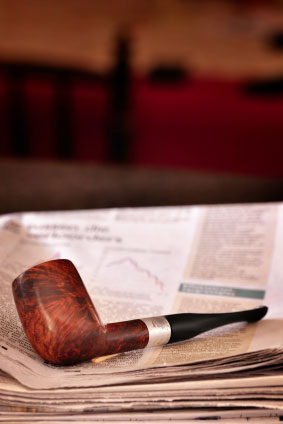 As for the differences between $100 and $500 pipes, that’s a real tin of worms, and any simple answer can’t have much traction, because it really depends on a number of factors. If you’d asked about the differences between $10 pipes (if there still was such a thing) and $100 pipes, it would be easier to discuss. Certainly, it’s possible to get a “cheap pipe” that is absolutely brilliant, smokes like a dream, and is aesthetically pleasing, but the odds are slim. Amongst the higher priced pieces, you’re more likely to find better chosen briar that’s been well seasoned, and crafted into a finished pipe with greater care. The stem material is more likely to be of high quality, and the additional attention to detail will give some increased assurance of a good smoke. By the time you get to the $100 range, you’re more than likely getting a very good pipe, so the simple answer to your question might appear to be no. Not so fast.
As for the differences between $100 and $500 pipes, that’s a real tin of worms, and any simple answer can’t have much traction, because it really depends on a number of factors. If you’d asked about the differences between $10 pipes (if there still was such a thing) and $100 pipes, it would be easier to discuss. Certainly, it’s possible to get a “cheap pipe” that is absolutely brilliant, smokes like a dream, and is aesthetically pleasing, but the odds are slim. Amongst the higher priced pieces, you’re more likely to find better chosen briar that’s been well seasoned, and crafted into a finished pipe with greater care. The stem material is more likely to be of high quality, and the additional attention to detail will give some increased assurance of a good smoke. By the time you get to the $100 range, you’re more than likely getting a very good pipe, so the simple answer to your question might appear to be no. Not so fast.
Once you break past the next barrier, you’re paying for different things, depending on the maker. Some makers put special attention on the internals of the pipe, which does make a difference, though incrementally so. They’re more likely to choose only the finest wood they can find, and many do their own seasoning, some allowing the briar to cure for several years before making pipes from it. Things like this do tend to increase the probability of getting a great smoking pipe, but there are still no guarantees, and just like you can get a fabulous pipe out of the basket at your local tobacconist’s shop, you can get a stinker from a high-end, reputable maker.
Then, there’s the psychological aspect of an expensive pipe, and the expectations it might create. Most of us, if we have the good fortune of having some premium-grade pipes in our collections, probably take better care of them. We’ll keep them cleaner, give them rest, only smoke them when we’re in the right mood, and will approach them believing they’re going to give us a great smoke. Objectivity often flies out the window when the overall gestalt is considered, so it could be that the $500 pipe you’re considering may actually be no better, objectively, than a $100 one, but you still might find yourself enjoying it more. Will you enjoy it $400 more? Only you can answer that. Pipe smoking is a complex thing that doesn’t yield to MBA style analysis.
Eric sends: Greg, I emailed you two or three weeks ago concerning briar pipes versus meers. Your explanations on briar adding unique characteristics and interest to tobacco was informative and made me rethink my briar/meer perception, so thanks for the schooling. I’m currently reading through Fred Hanna’s book and became curious about a pipe’s cake. Russ Oulette thinks it’s overrated as does Fred, whereas Fred postulates too much cake can alter a tobaccos taste. With this in mind, is cake something that’s essential? If tobacco’s interface with briar is a good thing is it best to maximize and not have any? I understand it protects the smoking chamber, but if one is careful to not let the pipe overheat then maybe cake isn’t essential. I have a new Ser Jacopo that I’ve started breaking in and after smoking I’ve started to rub the chamber down with a section of paper towel removing any moisture, ash and black gunk. Bad idea?
A: It’s an interesting question. I, too, have never been a proponent of a thick cake, and have always preferred to keep mine trimmed to a very thin layer, but I do feel that a thin layer is better than none at all, and that removing it completely after every few smokes will eventually find the smoker with no pipe left. The taste of the briar is important, but it comes from deeper in the wood, from the interaction between the moisture and tars in the smoke stream and the wood of the shank, and so on, not so much from the burning of the wood’s surface. The cake is not just burned tobacco, but is also a very thin layer of charred wood. That interface layer may be thin, perhaps only a few cells thick, but it’s certainly there, so there will always be SOME degree of cake when a pipe’s been smoked.
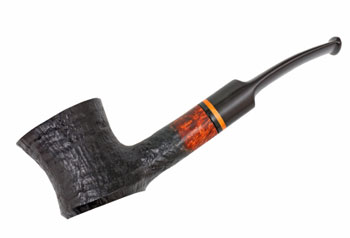 The problem with a thick cake is not only that it interferes with the flavour of the wood, which may or may not be true, but that it is quite porous, and absorbs some of the oils and distillates from the tobaccos we smoke. This does two things, neither of which, to my mind, is advantageous. First, it robs us of some of the flavours in the current bowl, which is certainly not a desirable thing. Second, it gives as good as it gets, so everything that it has absorbed over the previous smokes is offered back to the smoker in a different form, robbing us of the purity of flavour from our current smoke.
The problem with a thick cake is not only that it interferes with the flavour of the wood, which may or may not be true, but that it is quite porous, and absorbs some of the oils and distillates from the tobaccos we smoke. This does two things, neither of which, to my mind, is advantageous. First, it robs us of some of the flavours in the current bowl, which is certainly not a desirable thing. Second, it gives as good as it gets, so everything that it has absorbed over the previous smokes is offered back to the smoker in a different form, robbing us of the purity of flavour from our current smoke.
Of course, proponents will feel that it’s doing its job, here, neutralising some of the less desirable tastes that may be present in a tobacco, whilst evening out the playing field to some extent, making everything they smoke from their pipes more similar to each other than different.
To each his own, of course. I will not say the pro-cake smokers are wrong, and that those of us who like it thin are right. We each have our own unique way of enjoying the pipe, and, unfortunately or fortunately, depending on your viewpoint, we each come to our view through experience and exploration. As with any of these hard questions, my advice remains to try it both ways, and see which works best for your tastes, your smoking style, your tobacco choices. You may discover that a 1.5mm thickness is perfect for you, or that you want to keep it as close to the wall as possible.
But, by all means, don’t be in a hurry to build it. By swabbing out the chamber, you’re slowing the process, but not eliminating it. You’ll be rewarded in time with an even, hard cake, rather than an uneven spongy one, and that Ser Jacopo may well turn into the best smoking pipe you’ve ever had.
Danno asks, regarding Sextant: Ah, now a question for Maestro Pease. The addition of Rum begs the question: Does the alcohol help bring out flavors in the tobacco? For instance, I think it is fairly well known amongst foodies that alcohol, such as a white wine or vodka, can bring out certain flavor components in Italian Tomato Sauce that otherwise would not come out. Is the alcohol in the Rum possibly doing the same thing with the tobaccos?
A: The application of alcohol does solvate some of the flavour components in the tobacco and possibly (hand-waving, weasel wording) results in them being more evenly distributed throughout the blend, but, more importantly, the rum adds sugars and natural flavour compounds that intensify the overall experience. It would be difficult to say how much enhancement there might be to the native tobacco flavours, and how much of any perceived enhancement is actually just the result of a broader palette of tastes in the overall profile, but when done carefully, alcohols, especially things like rum, Bourbon and Scotch, certainly can work some significant mojo on the final result.
And, speaking of Sextant, Chrono queries: Regarding dark fired kentucky, how does the smoking curing affect the nicotine content? Also, in addition to "kentucky" we also hear about "carolina" and "maryland" leaf. I live in Georgia, and I know tobacco is grown here. Is there "georgia" leaf? It would be great if you could touch on this in the next installment.
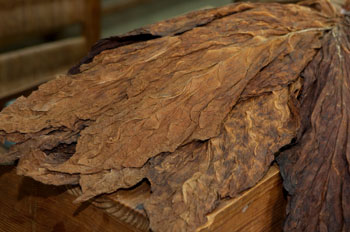 A: If anything, smoke-curing, as with any form of processing, might decrease nicotine content a little, as it’s a somewhat heat volatile chemical, but once the plant is harvested, nothing will increase it, if that’s what your getting to. The pH of the smoke can change the ability of the body to absorb what’s there, but that’s a more complicated subject, perhaps for another time.
A: If anything, smoke-curing, as with any form of processing, might decrease nicotine content a little, as it’s a somewhat heat volatile chemical, but once the plant is harvested, nothing will increase it, if that’s what your getting to. The pH of the smoke can change the ability of the body to absorb what’s there, but that’s a more complicated subject, perhaps for another time.
Some very fine flue-cured (virginia-type) tobacco is certainly grown in Georgia, but unlike the Carolina, Maryland and Kentucky leaf, it doesn’t have any distinguishing characteristics that make it unique, which is probably why there’s no Georgia type. The only reason flue-cured is commonly referred to as Virginia tobacco, irrespective of where it’s grown, is onaccounta that’s where it started, and it’s just stuck.
From Diston: First, let me say thank you for the wonderful work you do. I have yet to try one of your blends that I didn’t enjoy. My question is…When you are evaluating a new blend, be it yours or another brand, do you have a set method that you use? Do you add the blend to your current rotation or do you tend to only smoke the new blend for a period of time in different pipes? Thank you.
A: If I’m really focusing on something, I’ll smoke it, and nothing else, for a while, in different pipes, at different times of day, in order to really get to know it. Then, if I like what I’ve experienced, it’ll go into my selection for a while, at least until it’s gone. During the whole process, I keep notes on what I’m tasting, my overall impressions. If it’s something I’m developing, this process helps me to zero in on what I’m chasing. It can sometimes be a very long process for me. I think the record, so far, was Westminster, on which I spent over 13 months getting it where I wanted it. It seems a ridiculously long time, looking back, but dat’s how we roll.
David J. wonders if I’ll join the postulation posse by asking: Mr. Pease can you see any of the current pipe tobacco of today reaching a cult status? Will people still be talking of it in 25 years and paying premium money for it as they do with tobacco from The House of Sobranie. I know this is a bit of a loaded question, but it is one I had to ask.
A: If I could predict that, I sure wouldn’t tell anyone. At least not until I’d hoarded as much of the stuff as I could. Then, I’d be like a stock promoter, and get the buzz going, driving the prices up, and making millions on my savvy investment.
 More seriously, the climate that allowed Balkan Sobranie to become the cult icon it is was somewhat unique. The tobacco was widely popular for many, many years, and millions of tins of it were produced for millions of smokers. In addition to being a good tobacco, it had the advantage of mass marketing, being available in every tobacconist’s, every newsagent’s, every grocery store and filling station on the planet. (Okay, maybe not quite, but, still, it was pretty easy to find when it was in production.) The brand developed a huge following, and when it went out of production, or for that matter, when the packaging changed, whatever remained on the shelves was quickly bought up, creating a sort of instant demand, driving prices increasingly skyward. The stuff became legendary because of the combination of quality, availability, demand, and escalating prices, and we see where this has taken it today. Every pipe smoker knows of the stuff, there ain’t no mo’ being made, and to make things harder, different vintages come with higher or lower levels of demand. A pristine tin from the 1970s will bring crazy money, a late version, much less. Ebay, of course, has also played a significant role in price inflation, since it’s allowed pipesters from all over the world with the opportunity to sell, and buy those surviving vintage tins.
More seriously, the climate that allowed Balkan Sobranie to become the cult icon it is was somewhat unique. The tobacco was widely popular for many, many years, and millions of tins of it were produced for millions of smokers. In addition to being a good tobacco, it had the advantage of mass marketing, being available in every tobacconist’s, every newsagent’s, every grocery store and filling station on the planet. (Okay, maybe not quite, but, still, it was pretty easy to find when it was in production.) The brand developed a huge following, and when it went out of production, or for that matter, when the packaging changed, whatever remained on the shelves was quickly bought up, creating a sort of instant demand, driving prices increasingly skyward. The stuff became legendary because of the combination of quality, availability, demand, and escalating prices, and we see where this has taken it today. Every pipe smoker knows of the stuff, there ain’t no mo’ being made, and to make things harder, different vintages come with higher or lower levels of demand. A pristine tin from the 1970s will bring crazy money, a late version, much less. Ebay, of course, has also played a significant role in price inflation, since it’s allowed pipesters from all over the world with the opportunity to sell, and buy those surviving vintage tins.
But, there are fewer pipe smokers today, and distribution is more spotty. Will the mention of some of today’s blends bring a tear to an aging pipester’s eye at some time in the future? Probably so. Will today’s tobaccos ever command the same place in the hall of legend in which some of those old treasures reside? Maybe not. On the other hand, pipe smoking is on the rise, and I could be completely wrong. My advice? Invest in what you love to smoke, and don’t stop doing it. It will certainly increase in value as prices continue to rise from inflation and increasingly extortionate taxation, and it might even be worth something someday. If it’s not, you’ll have something great to smoke. [Editor’s note: See Pease’s article Balkan Sobriety.]
Tim offers: Okay, so Hanna and Schrier are publishing good pipe lit. When are we going to see a G.L. Pease compendium of essays and articles? I know I can read them on your site, but we are after all pipe smokers and enjoy the tactile joy of good books and pipes…
A: I’ve certainly considered it more than once, and have been approached by a publisher or two. It’s likely to happen one of these days.
Thanks for the great questions. I wish I could have gotten to more of the ones that are still in the inbox, but all in due time. In the meanwhile, keep ’em coming, and happy smoking.
-glp
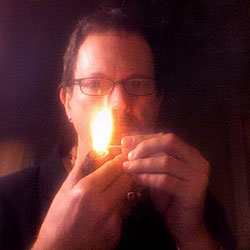
Since 1999, Gregory L. Pease has been the principal alchemist behind the blends of G.L. Pease Artisanal Tobaccos. He’s been a passionate pipeman since his university days, having cut his pipe teeth at the now extinct Drucquer & Sons Tobacconist in Berkeley, California. Greg is also author of The Briar & Leaf Chronicles, a photographer, recovering computer scientist, sometimes chef, and creator of The Epicure’s Asylum. |


















Mr. Pease, thanks for answering my question. You didn’t beat around the bush and gave a thorough answer. I have my ideas as to the current tobaccos we should be investing in. But, then again so do most people that smoke a pipe!
Fascinating comment on the difference of the tins of the aged blend Greg. If the 2004 had differed from the 2001’s then one could speculate on vintage of the crop or the effect of an additional 3 years of aging but for one of the 2001’s to differ from the other is more inexplicable. You use the analogy of different barrels of wine but it’d be interesting to know if the 2001’s were from the same batch (barrel)as there is less change likely in the tins (bottles) perhaps? (I assume they had been kept in the tins rather than jarred?).
On the matter of cult status, and some of your blends such as Renaissance, Bohemian Scandal, Raven’s Wing, Mephisto (as well as limited editions such as Stonehenge and Tribute) arguably already have it, the common factor here is they, like the blends referred to in the article, no longer exist. In which case I hope that others don’t obtain it if that is the requirement rather than simply quality!
On the questions of cost/value of pipes and cake thickness, I’ll be prudent and not pour on fuel!
I was fascinated, if not surprised, by the observation (conjecture?) that even slight differences in initial conditions can produce noticeable variance in a blend’s character over time. In a way I’m glad I don’t do such critical smoking; but, in a way, I’m glad that you do. As always, the opinions and writing here are a joy to read, and the photos so pleasing. Thanks for the effort. 🙂
Thanks for the great answers. I’m submitting a follow-up to your cake answer. ^_^ Looking forward to your response.
I really enjoy reading these!thank you for the time it takes to write these especially the reviews!
I just found out (the hard way) that it is not only illegal to ship tobacco in to Washington state, it is in fact a FELONY!! (ack) No i didn’t try to ship any thing my self. I tried to order some on line. (Jack Knife Plug to be exact..) i saw on here that a lot of fellas and perhaps gals order from one of the online distributors that support this wonderful site. They emailed me back the next day that they could not ship to my state..
Long story short-ish I Live in the boonies about and hour and a half to two hours from Seattle, forty five minutes to and hour to Tacoma. This Wrecked my day…
I have Wonderful World of Pipes Volume # 1 magazine 1970 Edition and zi wondering the value of it, any information would be helpful. …….Thank you